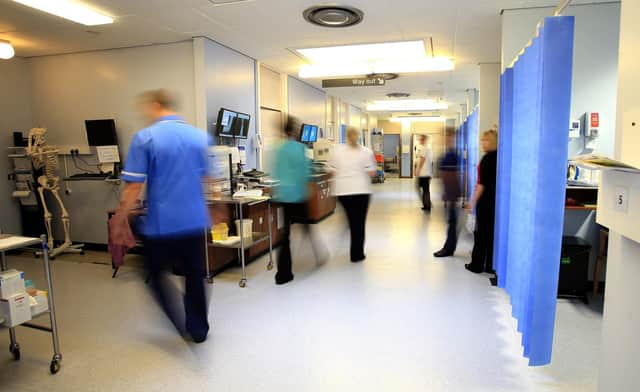Fears over “completely avoidable” deaths as NHS Scotland records worsening A&E waiting times


NHS Scotland’s accident and emergency (A&E) waiting times have worsened, according to official statistics, leading to renewed concern over “completely avoidable” deaths.
The latest Public Health Scotland statistics showed that 7,924 patients in A&E waited longer than four hours to be dealt with.
Advertisement
Hide AdAdvertisement
Hide AdThis includes 1,898 patients who were there for at least eight hours, and 563 patients who spent at least 12 hours in A&E.
During NHS Scotland’s winter crisis, the Royal College of Emergency Medicine Scotland (RCEM) warned that around 50 excess deaths a week were occuring, due to the likelihood of patient death increasing after about five or six hours waiting in an emergency department.
Scottish Conservative shadow health secretary, Dr Sandesh Gulhane, said the coming winter is now “a terrifying prospect”.
“We know these excess waits lead, tragically, to completely avoidable loss of life,” said Dr Gulhane.
“The fact that SNP targets are being missed by such a huge amount in high summer makes winter seem a terrifying prospect.
“Michael Matheson is not only following in his predecessors footsteps, but is creating a legacy of NHS failure in his own right.
Health Secretary Michael Matheson has insisted performance against waiting times targets in A&E has “stabilised”, although he conceded it was still “not where it needs to be” as figures showed a rise in the number of patients waiting longer than the target time for treatment.
Data for the last week in July showed that of the 25,526 people who attended A&E units, 69 per cent were seen and either admitted, transferred or discharged within four hours.
Advertisement
Hide AdAdvertisement
Hide AdThe figures, for the week ending July 30, are down from the 71.8 per cent of patients dealt with within the target time the previous week, and performance continues to be well below the Scottish Government’s aim of having 95 per cent of patients either admitted, transferred or discharged within four hours.
Mr Matheson said that while the statistics have “stabilised”, he knows “performance is still not where it needs to be and there is continued disparity in performance both between health boards and individual sites.”
He said the Scottish Government was “working closely with the health boards facing the greatest challenges in A&E, to drive down waiting times and improve services for patients and staff”.
Mr Matheson added: “Hospital bed occupancy continues to be a major factor impacting on performance which is why we are working to reduced instances of delayed discharge and are continuing to expand our Hospital at Home capacity.”
At the Royal Infirmary of Edinburgh just over half (51.7 per cent) were admitted, transferred or discharged within four hours.
In contrast at the Western Isles Hospital, 96.7 per cent of patients in A&E were dealt with inside the target time in the week ending July 30.
This meant the health board was the only NHS board area in the country to exceed the target of dealing with 95% of cases in A&E within four hours.
But in the NHS Forth Valley area more than two out of five patients waited longer than the target time, with 56.6 per cent admitted, transferred or discharged within four hours.
Advertisement
Hide AdAdvertisement
Hide AdScottish Labour’s health spokesperson, Jackie Baillie, said: "These numbers may be an improvement on the worst of the winter chaos, but they are still far below where they should be.
"Complacency is at the heart of the SNP and it appears Michael Matheson is no different as he has allowed poor performance in A&E to become the norm despite the harm it puts on patients.
"We must continue to fight for better conditions for both staff and patients in our NHS by investing in primary and social care and putting an end to delayed discharge."
Comments
Want to join the conversation? Please or to comment on this article.